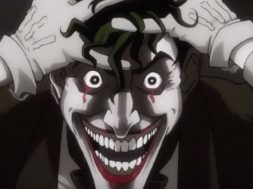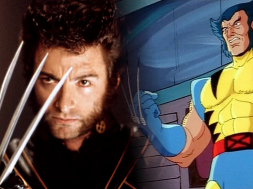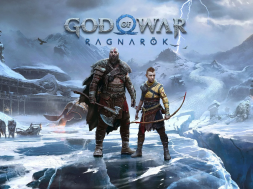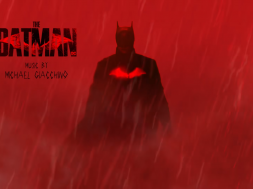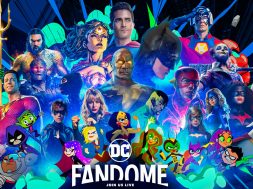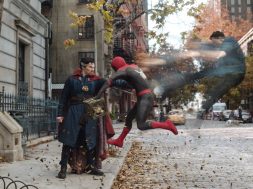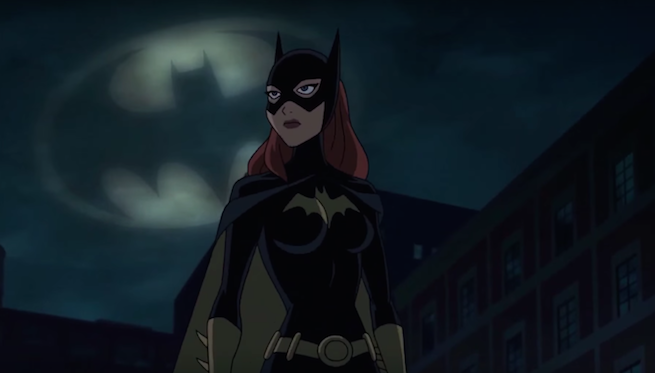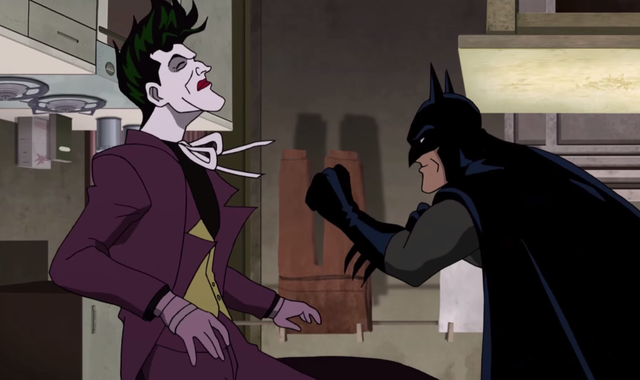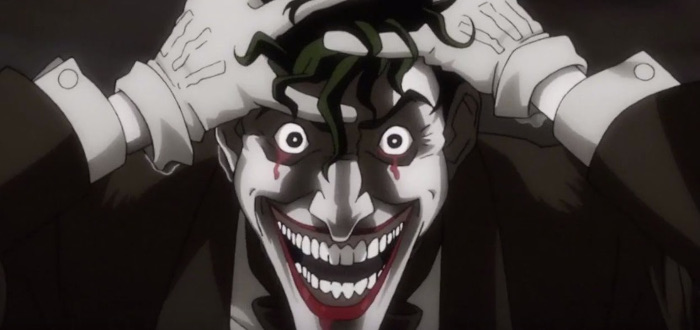
Love it or loathe it, it can’t be argued that The Killing Joke isn’t a classic Batman story. The 1988 one-shot from Alan Moore and Brian Bolland was part of a wave of stories that re-invigorated comics and brought them into a new era. The Killing Joke, in particular, is famous for its dark portrayal of Batman and The Joker, providing and origin for the latter while containing ruthless repercussions for the greater Bat-family. It was a story that inspired shock and awe among readers and helped set a new standard for comic storytelling – for the time.
And when viewing the new animated adaptation of the book, the phrase “for the time” is one that keeps coming to mind. Produced by Batman animation legend Bruce Timm and written by Brian Azzarello, with returning veterans Mark Hamill and Kevin Conroy reprising their roles as The Joker and Batman, the film is a practically shot-for-shot redux of the original comic, with an extra 30 minutes tacked on to beef up the runtime. But rather than using this extra time to reframe or add levity to the controversial events that would follow, it merely serves as a reminder of how out-dated The Killing Joke really is.
Narrated by Barbara Gordon, voiced by Tara Strong, the opening half hour is a prelude focusing on the relationship between Batman and a rookie Batgirl. This is a welcome inclusion in theory – enhancing Batgirl’s character helps viewers unfamiliar with her and can work towards recontextualizing Barbara’s fate in the main story. However, the Barbara Gordon depicted is little more than a fetishized furthering of the victim role she already plays in The Killing Joke. She’s seen as a close-to-rabid fangirl, obsessed with Batman and gaining his approval. And when her abilities fail her in a fight, Batman’s decision to remove her from the case causes her emotions to flare, leading to an incredibly ill-concieved romantic encounter between the two.
Bruce Wayne and Barbara Gordon being lovers isn’t entirely new to the Batman mythos – Bruce Timm has attempted to work it into his versions of Batman before, most notably in the series Batman Beyond. But while it’s not new, the display here is dry of any nuance or attempt to acknowledge the slightly off-putting underpinnings of such a relationship. The film repeatedly references prostitution and at one point alludes to one of the crooks having a fetish for Batgirl in their activities. A boring trope in and off itself, having the bad guys have an unsettling lust for Batgirl before she beats them up is ineffective when the film itself then turns around and inserts her into a sex scene with someone who is, for all intents and purposes, her superhero dad. At best, it comes off as try-hard “edgy and at worst, it’s a weird, gross, slightly incestuous misunderstanding of these characters and how to actually create a credible romance.
What’s worse is that this extra half-hour is ultimately meaningless when The Killing Joke itself begins. The Batgirl episode’s beginning and ending are narrated to lead into a full run-through of the titular story. There’s no mention of those events nor any indication of any effect they may have had. So, the movie plays like an odd double-feature of Barbara Gordon being lusted after to extreme effect before Barbara Gordon is turned into a throwaway victim for The Joker and Batman to fight and philosophize at each other.
Which only further brings to light The Killing Joke‘s weaknesses as a piece of Batman canon. An atom bomb in its day, the story in motion in this day and age comes across abrupt, crass, ill-fitting and altogether hollow. The source material is a slim 48 pages, so as a direct adaptation, the pace for the feature is incredibly quick. Timm‘s animation does handle the flow very well, his hard chins and muted colours comfortable in the shadows and sketched noir of Bolland‘s original. But such an honest approach to the material leaves its controversial elements looking bare-faced and poorly thought-out.
Barbara Gordon’s assault feels even more like a paltry excuse for a more “adult” story than before, her presence practically zoomed past as she’s used as munition to hurt Commissioner Gordon and Batman. The romantic endeavour that seemed to so define her previously isn’t even mentioned, rendering that connection with Batman a curios tangent to spend almost the first half exploring. The bulk of the story is spent on Batman and The Joker’s tired relationship with each other, presenting an origin for the latter. And despite being affected canonically to such a degree it would be over 20 years before the changes were rolled back, Barbara is only in the story for a couple of scenes, the smallest amount of time necessary spent with her. She’s just fodder to the need to be dark and gritty and controversial – The Joker, who had a really bad day once, is deemed more interesting because of his psychotic sadism and focusing on him makes the whole experience much more “mature”. If we’re talking mature by a 14 year-old’s standard of what maturity is.
It’s all just a little bit tiring. Not tiring in emotional heft, but in how it’s been 30 years, and this is still where Batman is; an emotionally stunted patriarchal figure surrounded by ’50s-worship set-pieces and trapped in worlds where the only female characters to be found are either there to be paid for sex or to be victims. One of the most printed superheroes of all-time, in no less than a half-dozen ongoing books at any one time, and Bruce Wayne is still stuck three decades ago. A story only really famous for its controversy rather than its quality. A story where it’s heavily implied Batman’s best friend’s daughter is sexually assaulted. A story where the only role of one of Batman’s most prominent, intelligent and strong female partners is to be brutally assaulted for the men to fight. Yeah, it was a great book, 28 years ago – it’s time we moved on.
